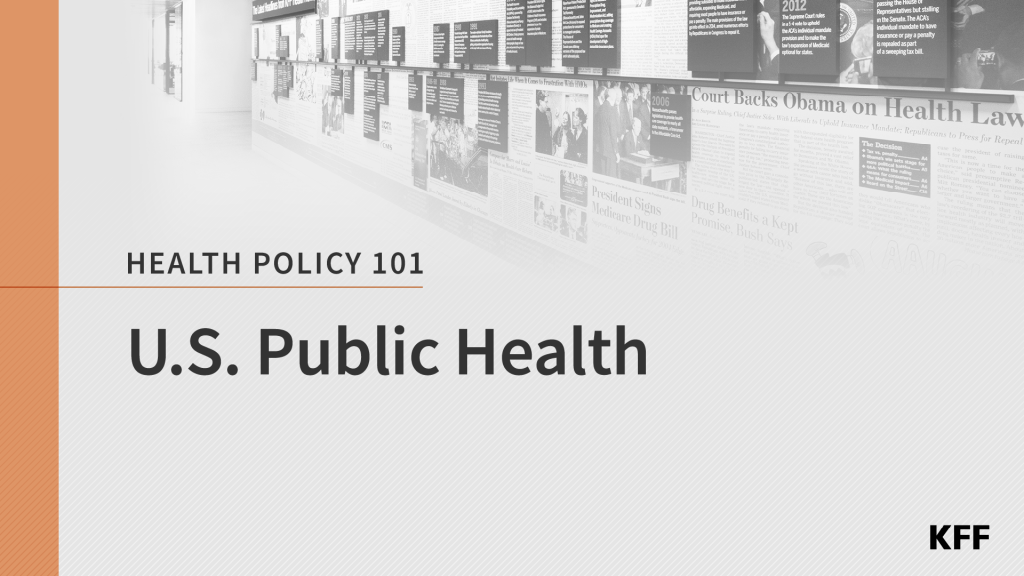Five Things to Know about the Cost of COVID-19 Testing and Treatment
This brief answer key questions on affordability of COVID-19 testing and treatment for people who are uninsured and those insured through private coverage, Medicare, and Medicaid.
The independent source for health policy research, polling, and news.
KFF’s policy research provides facts and analysis on a wide range of policy issues and public programs.
KFF designs, conducts and analyzes original public opinion and survey research on Americans’ attitudes, knowledge, and experiences with the health care system to help amplify the public’s voice in major national debates.
KFF Health News is a national newsroom that produces in-depth journalism about health issues and is one of the organization’s core operating programs.
Health Policy 101 is a comprehensive guide covering fundamental aspects of U.S. health policy and programs, including Medicare, Medicaid, the Affordable Care Act, employer-sponsored insurance, the uninsured population, health care costs and affordability, women's health issues, and health care politics. The Public Health chapter examines how public health is governed and delivered in the United States. It includes explanations of key public health frameworks, services, capabilities and characteristics, how the public health system works in state, local and territorial governments, and public health funding, workforce, and communication challenges in an era of declining trust.
This brief answer key questions on affordability of COVID-19 testing and treatment for people who are uninsured and those insured through private coverage, Medicare, and Medicaid.
Most of the Public, including Most Swing Voters, Disapprove of President Trump’s Coronavirus Response and Overall Job Performance; President Earns Higher Ratings on the Economy Even as many states start to lift restrictions on businesses and social gatherings, most Americans are expecting the coronavirus pandemic to upend their summers, with few saying they expect to…
These slides compare COVID-19 coronavirus cases and deaths in rural and urban areas.
With so many Americans dying, and so many more suffering severe economic hardship, it’s hard to look over the horizon at the larger questions the COVID-19 crisis will bring. The current emergency requires everyone’s attention 24/7. But an emerging set of questions will fall right in the bailiwick of the health policy community.
At-home SARS-CoV-2 diagnostic tests may be a promising avenue to get more people tested in a timely manner. Lessons from at-home sexually transmitted tests can offer important less about limitations related to specimen collection, public health surveillance, and coverage and access.
This 10-question quiz tests your knowledge about the coronavirus and COVID-19, including issues around symptoms, testing, number of cases and deaths, and cost sharing for treatment.
This blog looks at states that have moved to ease social distancing requirements, examining approaches taken as well as metrics for helping to assess readiness for reopening.
Recent federal legislation, the Families First Coronavirus Response Act, amended by the Coronavirus Aid, Relief, and Economic Security (CARES) Act, authorizes a 6.2 percentage point increase in federal Medicaid matching funds to help states respond to the COVID-19 pandemic. This issue brief answers key questions about the new federal funds, drawing on two sets of frequently asked questions about the Families First Coronavirus Response Act and CARES Act issued by the Centers for Medicare and Medicaid Services (CMS).
In response to the need to increase access to testing during the COVID-19 pandemic, recent federal legislation, the Families First Coronavirus Response Act, amended by the Coronavirus Aid, Relief, and Economic Security Act, creates a new optional Medicaid eligibility pathway, with 100% federal matching funds, for states to cover coronavirus testing and testing-related services for uninsured individuals. This new option is available from March 18, 2020 through the end of the public health emergency period. This issue brief answers key questions about how the new eligibility pathway is being implemented, drawing on frequently asked questions issued by the Centers for Medicare and Medicaid Services.
The COVID-19 outbreak has changed the reality of working life for most of the U.S. workforce, with essential workers at the forefront of performing crucial services for the public in the midst of the pandemic. This post examines who essential workers are and what challenges they are facing in light of coronavirus.
© 2025 KFF
